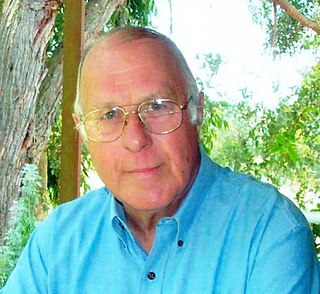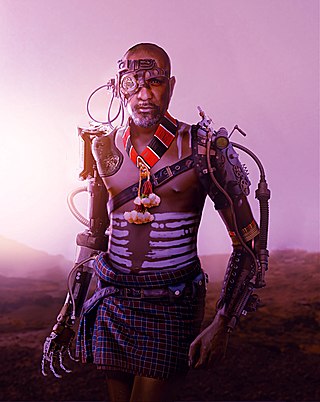Related Research Articles

Biomedical engineering (BME) or medical engineering is the application of engineering principles and design concepts to medicine and biology for healthcare applications. BME is also traditionally logical sciences to advance health care treatment, including diagnosis, monitoring, and therapy. Also included under the scope of a biomedical engineer is the management of current medical equipment in hospitals while adhering to relevant industry standards. This involves procurement, routine testing, preventive maintenance, and making equipment recommendations, a role also known as a Biomedical Equipment Technician (BMET) or as a clinical engineer.

Engineering is the practice of using natural science, mathematics, and the engineering design process to solve technical problems, increase efficiency and productivity, and improve systems. Modern engineering comprises many subfields which include designing and improving infrastructure, machinery, vehicles, electronics, materials, and energy systems.

Electrical engineering is an engineering discipline concerned with the study, design, and application of equipment, devices, and systems that use electricity, electronics, and electromagnetism. It emerged as an identifiable occupation in the latter half of the 19th century after the commercialization of the electric telegraph, the telephone, and electrical power generation, distribution, and use.

An artificial cardiac pacemaker, commonly referred to as simply a pacemaker, is an implanted medical device that generates electrical pulses delivered by electrodes to one or more of the chambers of the heart. Each pulse causes the targeted chamber(s) to contract and pump blood, thus regulating the function of the electrical conduction system of the heart.

Defibrillation is a treatment for life-threatening cardiac arrhythmias, specifically ventricular fibrillation (V-Fib) and non-perfusing ventricular tachycardia (V-Tach). A defibrillator delivers a dose of electric current to the heart. Although not fully understood, this process depolarizes a large amount of the heart muscle, ending the arrhythmia. Subsequently, the body's natural pacemaker in the sinoatrial node of the heart is able to re-establish normal sinus rhythm. A heart which is in asystole (flatline) cannot be restarted by a defibrillator; it would be treated only by cardiopulmonary resuscitation (CPR) and medication, and then by cardioversion or defibrillation if it converts into a shockable rhythm.

An artificial heart is an artificial organ device that replaces the heart. Artificial hearts are typically used to bridge the time to complete heart transplantation surgery, but research is ongoing to develop a device that could permanently replace the heart in the case that a heart transplant is unavailable or not viable. As of December 2023, there are two commercially available full artificial heart devices; in both cases, they are for temporary use, of less than a year, for total heart failure patients awaiting a human heart to be transplanted into their bodies.

Bionics or biologically inspired engineering is the application of biological methods and systems found in nature to the study and design of engineering systems and modern technology.
Wilson Greatbatch was an American engineer and pioneering inventor. He held more than 325 patents and was a member of the National Inventors Hall of Fame and a recipient of the Lemelson–MIT Prize and the National Medal of Technology and Innovation (1990).

Cardiac electrophysiology is a branch of cardiology and basic science focusing on the electrical activities of the heart. The term is usually used in clinical context, to describe studies of such phenomena by invasive (intracardiac) catheter recording of spontaneous activity as well as of cardiac responses to programmed electrical stimulation - clinical cardiac electrophysiology. However, cardiac electrophysiology also encompasses basic research and translational research components. Specialists studying cardiac electrophysiology, either clinically or solely through research, are known as cardiac electrophysiologists.
Neuroprosthetics is a discipline related to neuroscience and biomedical engineering concerned with developing neural prostheses. They are sometimes contrasted with a brain–computer interface, which connects the brain to a computer rather than a device meant to replace missing biological functionality.

Geoffrey Gordon Wickham was one of the pioneers of cardiac pacemaking.
John Alexander Hopps, was a co-developer of both the first artificial pacemaker and the first combined pacemaker-defibrillator, and was the founder of the Canadian Medical and Biological Engineering Society (CMBES). He has been called the "Father of biomedical engineering in Canada."
Articles related specifically to biomedical engineering include:
Yahya Rahmat-Samii is the Northrop Grumman Chair Professor in Electromagnetics at the electrical engineering department at the University of California, Los Angeles, where he teaches and conducts research on microwave transmission and radio antennas. Rahmat-Samii received his Bachelor of Science degree in electrical engineering in 1970 from the University of Tehran, Iran, and the Master of Science in 1972 and the Doctor of Philosophy degrees in electrical engineering in 1975 from the University of Illinois at Urbana-Champaign. Before joining UCLA in 1989, he was a senior research scientist at the NASA Jet Propulsion Laboratory.
Morton Maimon Mower was an American cardiologist specializing in electrophysiology and the co-inventor of the automatic implantable cardioverter defibrillator. He served in several professional capacities at Sinai Hospital and Cardiac Pacemakers Inc. In 1996, he became the chairman and chief executive officer of Mower Research Associates. He was inducted into the National Inventors Hall of Fame in 2002 for the development of the automatic implantable cardioverter defibrillator with Michel Mirowski in the 1970s. He continued his research in the biomechanical engineering laboratories at Johns Hopkins University.

A cyborg —a portmanteau of cybernetic and organism—is a being with both organic and biomechatronic body parts. The term was coined in 1960 by Manfred Clynes and Nathan S. Kline. In contrast to biorobots and androids, the term cyborg applies to a living organism that has restored function or enhanced abilities due to the integration of some artificial component or technology that relies on feedback.
Alois A. Langer is an American biomedical engineer best known as one of the co-inventors of the Implantable Cardioverter Defibrillator (ICD).
Jozef Cywinski is a Polish-American scientist, a specialist in the field of biomedical engineering and specifically in electrical stimulation of living organisms. His work has been the subject of 12 patents, two books and over 100 scientific publications. He developed several first-on-the-market electro-medical devices like cardiac stimulators pacemakers, train-of-four nerve stimulators, PACS, EMS, TENS and Veinoplus calf pump stimulators.
Mark G. Allen is a professor specializing in microfabrication, nanotechnology, and microelectromechanical systems at the University of Pennsylvania, where he is currently Alfred Fitler Moore Professor of Electrical and Systems Engineering Director of the Singh Center for Nanotechnology, and leader of the Microsensor and Microactuator Research Group. Prior to his joining the University of Pennsylvania in 2013, he was with the Georgia Institute of Technology, where he was Regents' Professor of Electrical and Computer Engineering and the J.M. Pettit Professor in Microelectronics. While at Georgia Tech, he also held multiple administrative positions, including Senior Vice Provost for Research and Innovation; Acting Director of the Georgia Electronic Design Center; and Inaugural Executive Director of Georgia Tech's Institute for Electronics and Nanotechnology. He was editor in chief of the Journal of Micromechanics and Microengineering (JMM), and currently serves on the editorial board of JMM as well as the journal Microsystems and Nanoengineering.

Erwin Hochmair is an Austrian electrical engineer whose research focuses in the fields of biomedical engineering and cochlear implant design. He has been a professor at the Institute of Experimental Physics, University of Innsbruck since 1986. He has authored and co-authored over 100 technical articles and holds about 50 patents. He is the co-founder and owner of the medical device company MED-EL.
References
- "A Few of the Many Electrical Engineering Graduates Who Have Made a Difference". University of Arkansas, Department of Electrical Engineering. Retrieved December 9, 2010.